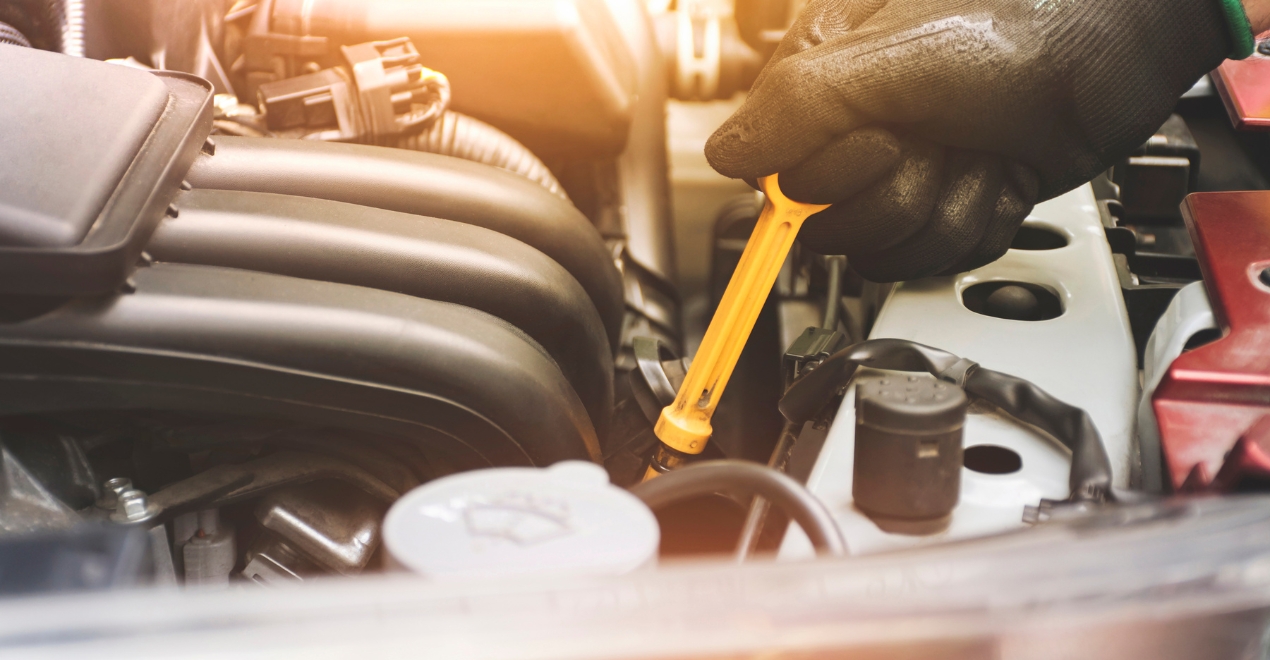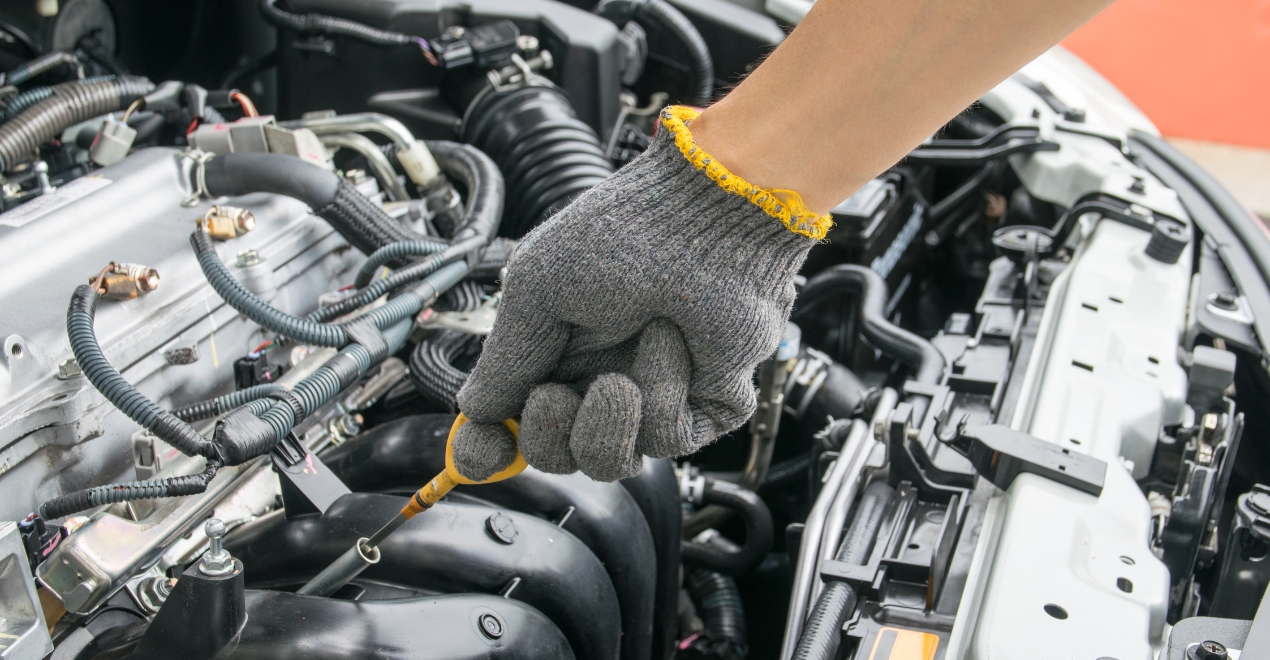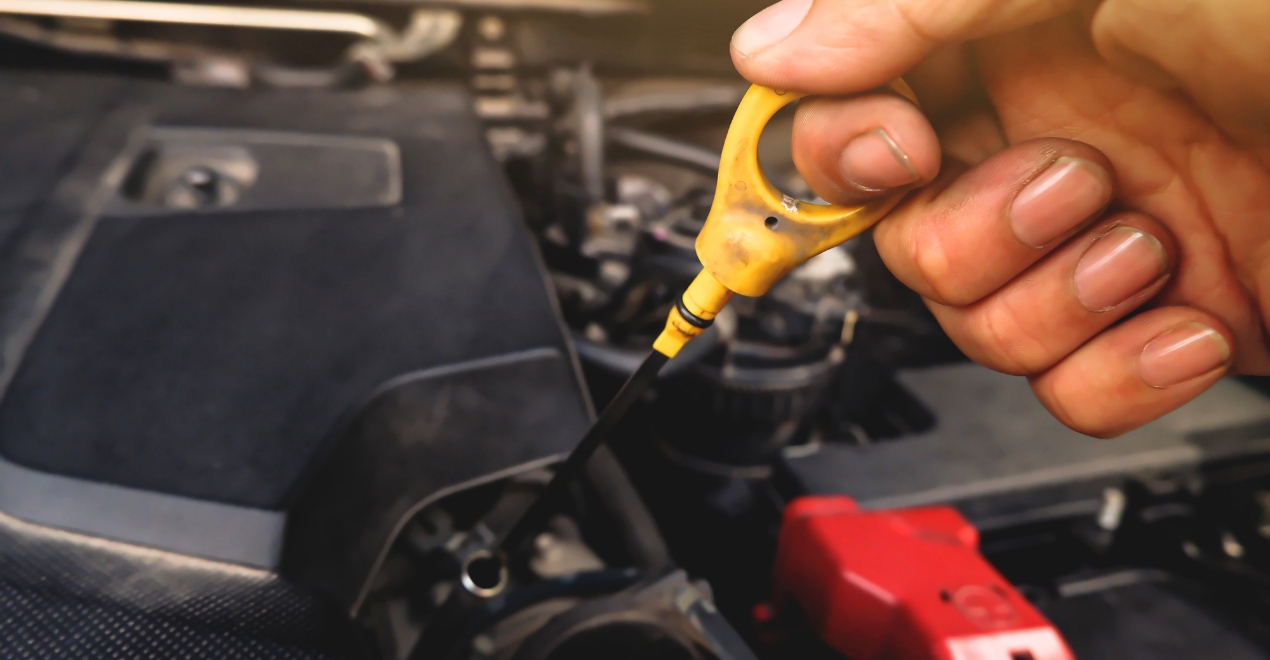Your car’s engine oil plays a critical role in its smooth operation and longevity. Oil acts as a lubricant, reducing friction between moving parts, preventing overheating, and removing harmful contaminants. Regularly checking your engine oil level on dipstick is a simple yet crucial maintenance task you can perform yourself. This guide focuses on using the dipstick, a common tool found in most vehicles, to check and, if necessary, adjust your oil level. Empower yourself with simple maintenance tasks like checking oil levels. For instant assistance with any car issue, rely on Crossroads Helpline.
Understanding the Oil Level on Dipstick

The dipstick is a long, thin metal rod located in your engine compartment. It’s usually brightly colored with a loop handle at the top for easy access. The dipstick serves two primary functions:
- Oil Level
- Measurement: The dipstick has markings on its usable length, indicating the minimum and maximum recommended oil levels for your engine. By pulling out the dipstick and examining the oil film on its tip, you can determine if your engine has enough oil.
- Oil Quality Assessment: The color and consistency of the oil level on dipstick can also offer clues about the oil’s condition. Clean, golden oil indicates healthy oil. Dark, dirty oil suggests it’s time for an oil change. Pay close attention to any unusual particles or metallic flakes in the oil, as these might signify internal engine wear.
Before You Begin: Safety and Preparation
Before checking your oil level, ensure your car is parked on a level surface with the engine turned off for at least 30 minutes. This allows the oil to settle back into the crankcase, providing an accurate reading on the dipstick.
Gathering the Necessary Tools:
- Shop Rag: A clean shop rag will be handy for wiping the dipstick clean and absorbing any accidental oil spills.
- Owner’s Manual: Consult your car’s owner’s manual to locate the oil level on dipstick and identify the recommended oil type and capacity for your specific vehicle.
Locating the Dipstick
Open the hood of your car and locate the engine compartment. The dipstick is typically positioned near the front of the engine block, close to the firewall. It might have a label or be brightly colored for easy identification. If you have difficulty finding it, refer to your owner’s manual for guidance.
Checking Your Oil Level: A Step-by-Step Guide

- Pull Out the Dipstick: Grip the loop handle on the dipstick and carefully pull it straight out of its tube. Avoid jerking or yanking the dipstick, as this might damage the dipstick itself or the tube it’s housed in.
- Wipe the Dipstick Clean: Use the clean shop rag to wipe away any oil film on the dipstick’s marked area. This ensures you get an accurate reading on the subsequent step.
- Reinsert and Re-extract the Dipstick: Without adding any oil yet, reinsert the dipstick fully back into its tube. This ensures the oil film on the dipstick accurately reflects the current oil level in the engine. Once inserted, carefully pull the dipstick out again for inspection.
- Identify the Oil Level Markings: The dipstick will have two primary markings: a minimum level (often labeled “MIN” or “LOW”) and a maximum level (often labeled “MAX” or “FULL”). These markings indicate the safe operating range for your engine’s oil level.
Interpreting the Oil Level Reading
Here’s how to interpret the oil film on the dipstick based on the markings:
- Oil Film Between Minimum and Maximum Levels: This is the ideal scenario. Your engine has sufficient oil for proper lubrication.
- Oil Film Below the Minimum Level: Your engine is low on oil. You’ll need to add oil to bring the level up to the recommended range.
- Oil Film Above the Maximum Level: Your engine has too much oil level on dipstick. Overfilling can be just as detrimental as underfilling. Consult your owner’s manual for instructions on how to safely remove excess oil.
Adding Engine Oil
If your oil level is below the minimum mark, it’s time to add oil. Here’s how to do it safely and effectively:
- Consult Your Owner’s Manual: Refer to your car’s owner’s manual to determine the recommended oil type and viscosity for your engine. Using the wrong type of oil can damage your engine.
- Choose the Right Oil: Purchase the appropriate engine oil based on your owner’s manual recommendations. Most oil containers will clearly display the oil type and viscosity grade.
Adding Engine Oil and Important Post-Check Considerations

-
Locate the Oil Filler Cap: The oil filler cap is typically located on top of the engine block. It might be labeled with an oil can symbol for easy identification.
-
Add Oil in Small Quantities: Using a funnel to avoid spills, carefully add oil in small amounts, typically around half a quart at a time. After each addition, check the dipstick again following the steps outlined earlier (wipe, reinsert, re-extract, and interpret the oil level reading).
-
Avoid Overfilling: Stop adding oil as soon as the oil level on dipstick reaches the recommended range between the minimum and maximum markings. Overfilling can lead to engine problems like oil leaks and internal component damage.
Important Post-Check Considerations
Once you’ve finished checking and, if necessary, adjusting your oil level, here are some additional points to remember:
- Dispose of Used Oil Responsibly: Don’t throw away used engine oil. Most auto parts stores and service stations accept used oil for proper recycling. Never pour used oil down the drain or onto the ground, as it can harm the environment.
- Record Your Oil Change: Keep a record of the date and mileage when you check and adjust your oil level. This information will be helpful in determining when your next oil change is due, which typically follows a recommended service interval specified in your owner’s manual.
- Consult a Professional if Needed: If you encounter any difficulties locating the dipstick, identifying the oil filler cap, or interpreting the oil level on dipstick, it’s best to consult a qualified mechanic or service professional.
Benefits of Regularly Checking Your Oil Level
Making a habit of regularly checking your oil level offers several benefits for your vehicle’s overall health and performance:
- Early Detection of Potential Issues: Regular oil level on dipstick checks can help you identify potential problems early on, such as leaks or excessive oil consumption. Addressing these issues promptly can prevent costly repairs down the road.
- Maintaining Engine Performance: Proper oil level on the dipstick ensures optimal engine lubrication, reducing friction and wear on internal components. This translates to smoother engine operation and improved fuel efficiency.
- Extending Engine Life: By keeping your engine well-lubricated with the right amount of oil, you’re contributing significantly to its longevity.
Conclusion
Checking and adjusting your oil level with the dipstick is a straightforward preventative maintenance task that can significantly benefit your car. By incorporating this practice into your routine, you’re taking charge of your vehicle’s health, ensuring its smooth operation and potentially saving yourself money on repairs in the long run. Remember, a well-maintained engine is a happy engine, and a happy engine translates to a more reliable and enjoyable driving experience. Take charge of your car’s maintenance! Check your oil level now and remember, Crossroads Helpline is just a call away for swift repairs.

